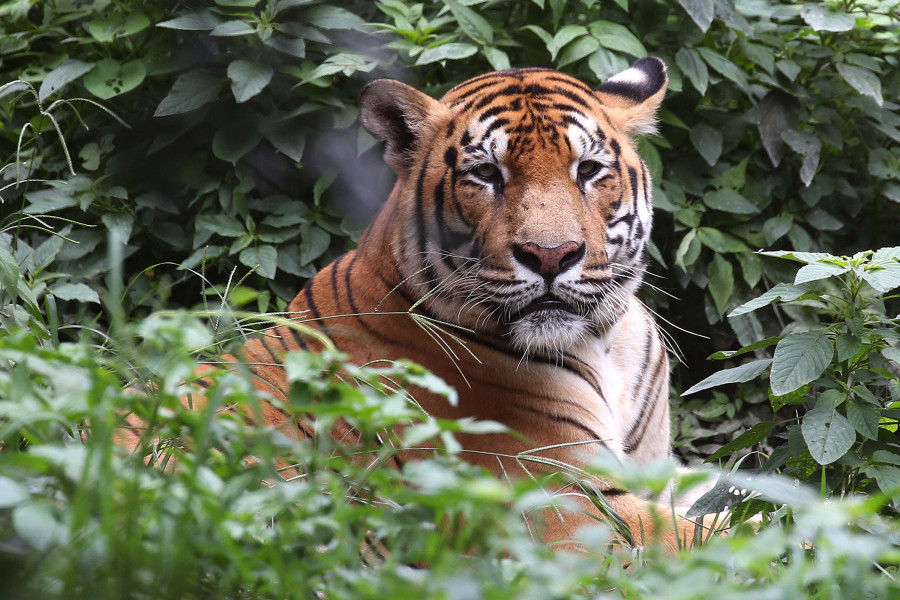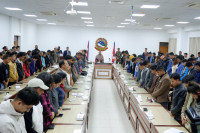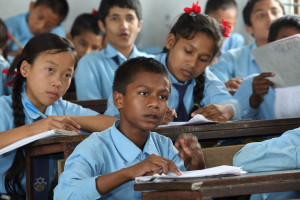Columns
Tiger carrying capacity debate
Nepali wildlife conservationists are divided over the PM’s tiger population statement.
Aditya Acharya & Dayaram Pandey
During an event organised by the Ministry of Forests and Environment in December last year to reflect on Nepal’s participation in COP29, Prime Minister KP Sharma Oli said that having 150 tigers in Nepal’s forests was enough. “Let us gift tigers to our friendly nations. Protecting (all) tigers by endangering human lives is not possible,” he declared.
Oli’s remarks divided Nepali conservation professionals—foresters, park rangers and wardens, wildlife biologists and academicians alike. Many, including government officials working in the environment and conservation sector, view his argument as valid, while others don’t see any problem with the number.
Oli’s statement that increasing or even protecting the existing number of tigers isn’t necessary at the cost of human life is reasonable. But it is important to ask where the fatalities take place. Inside protected areas (national parks and wildlife reserves, for this matter), tiger attacks are more likely to occur due to human carelessness. However, if they take place outside such areas, their excessive number could be one of the reasons behind the attack. Further, his claim that 150 is the correct number is baseless.
Tiger doubling programme
In 2010, the 13 tiger range countries—Bangladesh, Bhutan, Cambodia, China, India, Indonesia, Lao PDR, Malaysia, Myanmar, Nepal, Russia, Thailand and Vietnam—agreed to double the (wild) tiger population by 2022, based on the baseline population of 2010. This initiative came in response to the alarming decline in tiger populations, with fewer than 3,200 tigers in the wild globally. Nepal had 121 tigers then.
With effective habitat management, science-guided policy support, law enforcement and community stewardship, Nepal gradually increased the number of tigers. Periodic assessments conducted every four years since 2009 have shown a steady increase in the tiger population in the country—nationwide assessments in 2009, 2013 and 2018 estimated 121, 198 and 235 tigers, respectively. The fourth assessment in 2022, when the population was expected to double, showed that Nepal had 355 tigers, nearly triple the baseline population. The country received international accolades for this accomplishment. Current estimates suggest that Nepal’s forests are home to more than 355 wild tigers.
The ‘carrying capacity’
This is not the first time the discourse on the number of tigers Nepal can accommodate has surfaced. Scientific debates on the viability of doubling the tiger population from the 2009 numbers began almost a decade ago. There were doubts and convictions. However, that was about having 250 tigers, around double the 2009 population, not the current triple population. So, how many tigers are enough for us?
Carrying capacity, the maximum population of a species that a certain environment can support, cannot be static forever. Multiple factors, called habitat components, such as food availability, water, shelter, etc., affect it. However, as a territorial animal, a tiger tends to keep a particular space as its private space and usually does not allow other tigers to use that. Therefore, the area currently set aside as a Protected Area is also an important factor.
However, simple unitary method calculations do not work for complex ecological and (wildlife) behavioural issues, and calculating carrying capacity is not straightforward. Hence, there is no extensive research regarding whether Nepal currently has a carrying capacity of 355+ tigers, and conservation professionals seem to be divided over that issue. However, neither those supporting or opposing the PM’s remarks have stated the right number.
Quoting conservationists and professors, a recent news report has also argued that Nepal’s tiger-carrying capacity has not been saturated yet because neither residents around the protected areas had complained about the problems because of tigers nor conservationists had complained about the difficulty in managing tigers! To that group of professionals who also think the same, it must be understood that it’s already too late to act if such complaints start coming out. Such nonchalant comments are not logical as these problems cannot be solved overnight, and they keep a large human population at risk.
Worrisome debate
The arguments from both groups of conservation professionals over the PM’s statement are deeply concerning, especially to us as environmentalists and junior-level conservationists. Instead of supporting or providing solidarity with the PM’s argument, ecologists and wildlife biologists should have spoken first, as they are the experts. If the habitat components—food, water, shelter, and space—for the tigers were insufficient, they should not have waited for a politician to speak on the issue.
Similarly, conservation professionals opposing the PM’s argument should not simply say he is wrong but provide the numbers based on scientific assessments. Even if they are not specific, they should be able to tell the tigers’ population range that Nepal can accommodate. An ecological issue like this warrants a common voice backed by scientific facts and evidence from all conservation professionals.
To conclude, irrespective of what the Prime Minister says, whether problems with the existing tiger population have been encountered or not, periodic (or annual) assessments of the country’s tiger-carrying capacity must be conducted. It is necessary to know whether we should aim and work to maintain a stable population or if we can further increase the number of tigers. This also helps to ensure that the tiger population does not exceed the country’s carrying capacity at any time. Claiming that the tiger population has exceeded our carrying capacity simply after seeing them roaming in villages is not the approach that educated conservation professionals should take.




 14.12°C Kathmandu
14.12°C Kathmandu
















